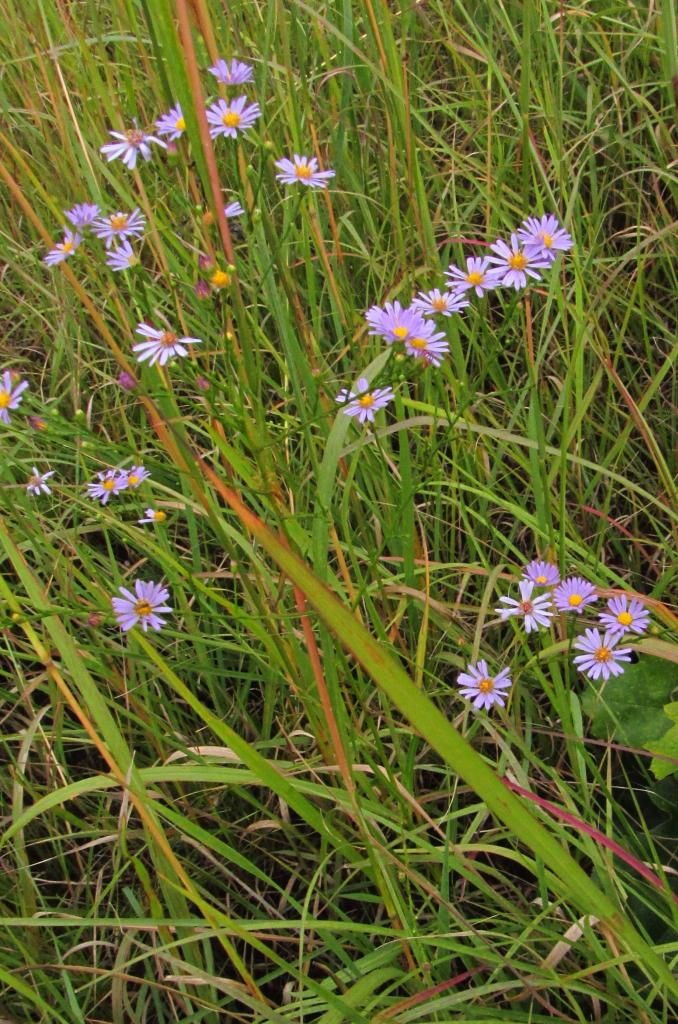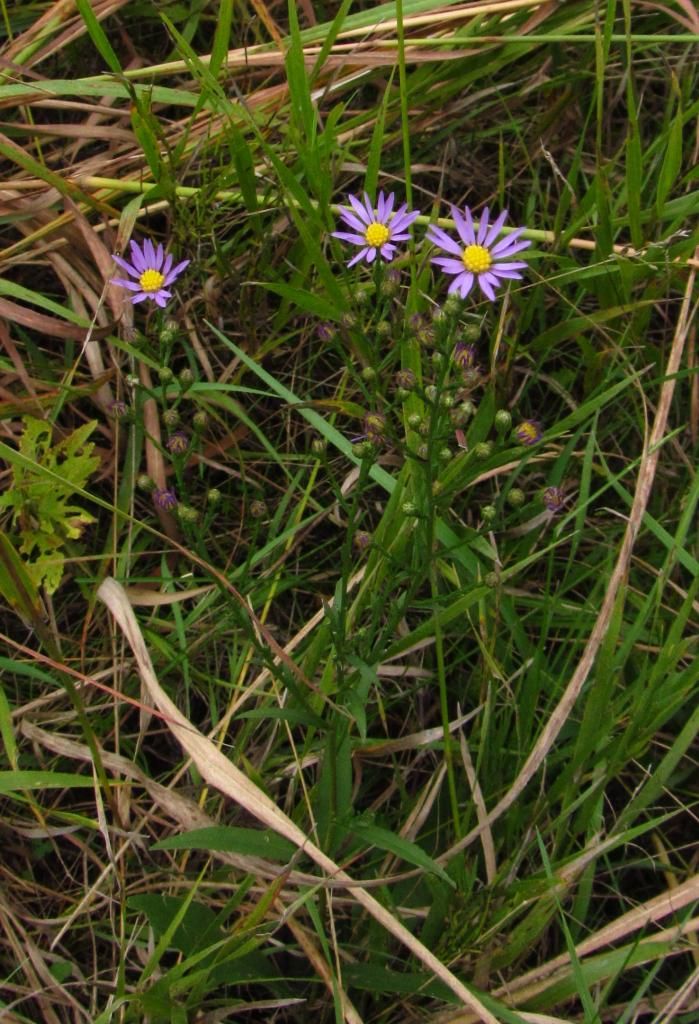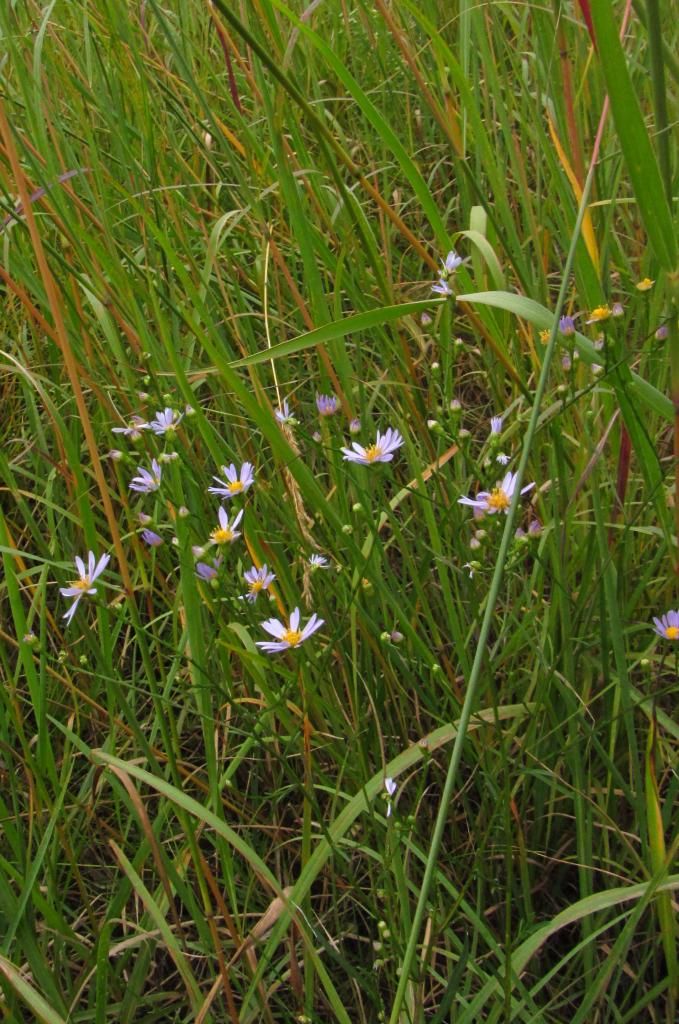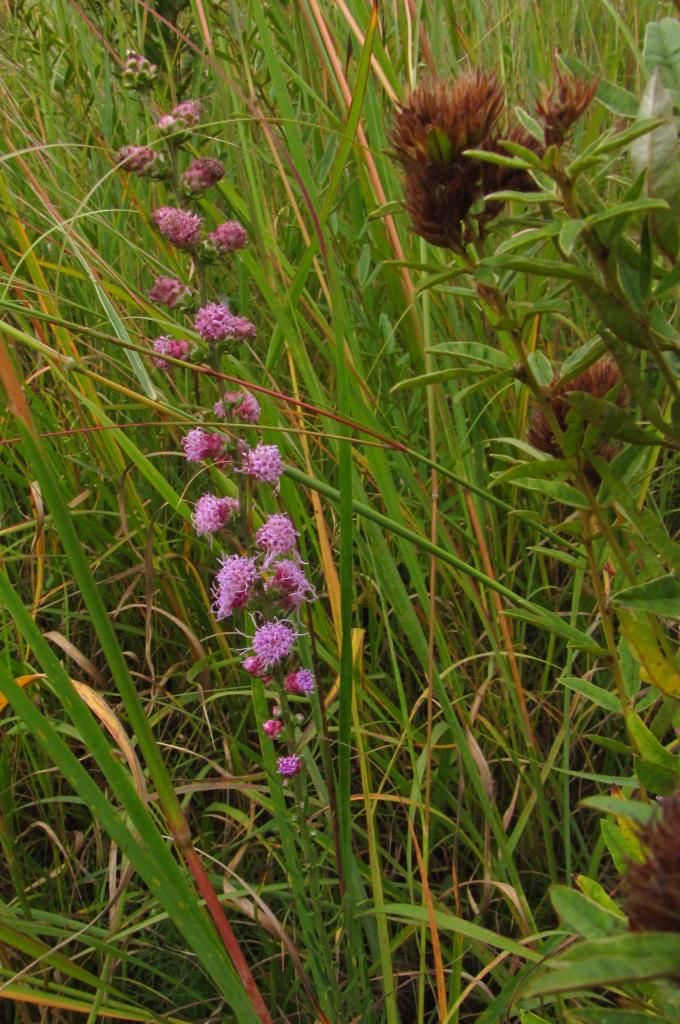Full disclosure: asters can be hard to tell apart, even for experts, and I am not an expert. So while I’m fairly confident that the pictures below depict Sky blue aster, I wouldn’t bet the farm on it. They were blooming last month in prairie habitat at Whiterock Conservancy, and I suspect some are still blooming, as many asters continue to flower well into the Iowa autumn.
As a bonus, I’ve enclosed below a picture of one of my favorite late summer prairie wildflowers, rough blazing star. It was blooming near the patches of sky blue aster.
This post is also an open thread: all topics welcome.
This week’s featured plant is known variously as skyblue aster, sky-blue aster, or sky blue aster. You can take your pick among a trio of scientific names: Aster azureus, Aster oolentangiensis, or the now-preferred Symphyotrichum oolentangiense. Sky blue aster is native to much of the eastern U.S. and is most often found in prairies, but sometimes in other habitats, such as savannas, woodland edges, meadows, or roadsides.
Like other asters, this plant has flowerheads with numerous ray and disk flowers. Sometimes the ray flowers are pale blue, hence the plant’s common name. The ones I saw at Whiterock were more violet than the color of the sky.
Click here or here for a detailed botanical description of sky blue aster. The upper part of the stem usually branches into dozens of flowerheads. In this shot, you can see many unopened buds below the first flowerheads to bloom.
A wide variety of insects feed on sky blue aster or pollen, including many species of bees, wasps, flies, butterflies, moths, ants, and beetles. Some birds and mammals feed on the foliage or seeds of this plant.
Sky blue aster flowerheads are considered “showy,” but walking through tall prairie grasses I was practically on top of these plants before I noticed them.
Finally, I enclose a bonus shot of Rough blazing star (Liatris aspera), which is so striking on the prairie landscape. I didn’t recognize the plant to the right, which had already gone to seed by mid-September. According to Eileen Miller, it’s Round-headed bush clover (Lespedeza capitata). Next summer I will try to catch this wildflower blooming.





